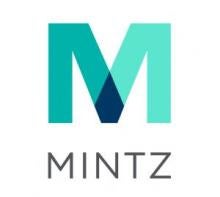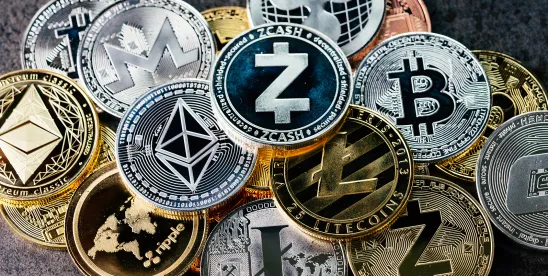Prospective purchasers of blockchain assets can now navigate through global exchanges (i.e., Coinbase or Kraken) to invest in various forms of tokens. Investments in tokens, however, are only the tip of the iceberg for those who are interested in undertaking financial exposure in blockchain projects. Here, we will provide a high-level overview of common forms of securities that blockchain investors may choose to acquire.
-
Tokens.
As perhaps the most straightforward form of blockchain investment, tokens can be purchased by investors either from the token issuer directly or through a secondary market. Tokens can take various forms, including utility tokens, security tokens, payment tokens, or stablecoins.
-
Equity.
Rather than acquiring tokens themselves, investors can purchase equity of companies that either have issued tokens or plan to do so in the future. Whereas certain issuers may distribute tokens directly, others may have a business model related to blockchain more generally. These investments may take the form of an issuer’s common or preferred stock. As an alternative to a purchase of share, investors may instead receive an instrument convertible into equity such as a Simple Agreement for Future Equity (a “SAFE”) or a convertible note. As a further incentive for equity investment, issuers may offer an option to purchase tokens at a future point in time (such as a “warrant”; more on this below).
-
Pre-Purchase Agreement for Tokens.
When an issuer has not yet minted tokens but intends to do so in the near future, the issuer may decide to issue pre-purchase agreements. As a play on the SAFE acronym, a pre-purchase agreement for tokens is often referred to as a Simple Agreement for Future Tokens (or a “SAFT”). However, unlike a standard Y-Combinator form of SAFE, there is not yet an industry standard form for a SAFT, although certain forms have gained in popularity.
Below are key considerations to be taken into account when evaluating an investment in a SAFT:
- Valuation. Whereas a SAFE typically defers on the determination of valuation to a future point in time, a SAFT is often drafted as a pre-purchase agreement with a specified price per token. In exchange for an early investment while the token is still in development, an investor is given a price per token more favorable than that which will be offered to future investors upon a token launch. Less often, a SAFT may be drafted more analogously to a SAFE and will defer the valuation question to the future. With this formulation, the price per token will be determined based on the rate offered by the issuer upon token launch and may offer a percentage discount.
- Deadline. Unlike a typical form of SAFE, a SAFT often includes a maturity date upon which the investor’s purchase price must be returned if a token has not been issued. The inclusion of a maturity date protects the investor against the risk of a company either pivoting its business and deciding not to issue tokens or failing to develop the intended token. Even with a maturity date, a SAFT is not without risk. Issuers often use funds received pursuant to a SAFT in connection with the development of their project and may not have funds available to make a repayment upon maturity.
-
Token Warrant.
A token warrant provides an investor with the option, but not the obligation, to purchase tokens prior to the warrant’s expiration at a set price. A token warrant may be sold on its own, but it most often issued alongside another security such as stock or an instrument convertible into shares of stock.
Below are key considerations to be taken into account when evaluating a token warrant:
- Expiration Date. Whereas some warrants expire upon a specific date, others may expire sooner upon the achievement of a milestone. A common milestone is the initial launch of the applicable token. Additionally, token warrants often permit for multiple exercises; for example, subsequent exercises may be permitted if additional tokens are launched or if the quantity of a token previously minted is increased.
- Price. An investor could pay a nominal amount upon issuance of a token warrant for the right to buy tokens at a price offered in the future; for example, at the price that tokens are offered to insiders or at a discount to the price that tokens are offered to the public. Alternatively, a token warrant could be drafted as a “penny warrant” whereas the investor is granted a right to purchase tokens for nominal amount (for example, $0.01 total) in the future.
- Allocation. The allocation of tokens to be issued may be provided as a predetermined number of tokens or as a percentage of the future tokens issued. Alternatively, as is often the case when warrants are issued in connection with an equity investment, a warrant may grant to the investor a right to purchase their “pro rata” percentage of the future token issuance. Although on its face this calculation may initially appear straightforward, the formula itself is often a point of considerable discussion among the investor and the issuer. An investor-favorable calculation would permit an investor to purchase their pro rata percentage (or perhaps a multiple of their pro rata percentage) of the total number of tokens generated. Issuers may push back, offering a pro rata issuance only of the percentage of tokens allocated to insiders. The definition of “insiders” is itself a negotiated term, and may include the issuer’s founders, other investors, and key employees. Given the significant economic impact that this initially innocuous term may have, all elements of the calculation of the investor’s allocation should be carefully considered by all parties involved.
- Additional Terms for Consideration.
- Vesting. In any transaction that involves the future issuance of tokens, there is likely to be a tension between the issuer, who in order avoid an immediate sell-off upon grant would prefer to lock up the tokens from future sales for an extended period of time, and the investor, who would prefer to be permitted to freely transfer their tokens as soon as permitted by law (which in the United States may involve compliance with transfer restrictions under the securities laws). Investors may consider requesting that the tokens vest in accordance with a pre-determined schedule, whereas issuers may prefer to retain flexibility to set a vesting schedule upon the token launch. As a middle-ground, parties may consider permitting a lock-up of tokens to be determined by the issuer at launch, but in no event more restrictive than the least restrictive vesting schedule applicable to any insiders.
- Governing Law. Across jurisdictions, the treatment of tokens continues to evolve at a rapid pace. Investors must consider not only the applicable law in the jurisdiction in which they reside, but also the local laws of the token issuer. Given the potential regulatory disparity between jurisdictions, investors should seek the advice of local counsel.
- Regulatory Updates. In the United States, blockchain tokens are likely to be considered “securities”. However, this is a rapidly-evolving regulatory landscape under which the classification and treatment of blockchain tokens may be reconsidered. For example, the SEC has recently created a new “Crypto Task Force” and has rescinded certain controversial staff guidance related to the accounting treatment of custodied crypto assets. Investors and issuers alike should procure legal counsel to ensure continued compliance with all applicable laws and regulations.





 />i
/>i
